![]()
![]()
ARTSAKH IN THE FOREFRONT OF
THE NATIONAL LIBERATION MOVEMENT - PART IV
T H E F R E E D O M F I G H T E R S

H O N O R I N G T H E F A L L E N D E F E N D E R S
According to the reliable statistics published in the 1920s in The Caucasus Calendar, the number of the inhabitants of Shushi in 1920 was 60,000 of which 47,000 (over 78%) were Armenians. Shushi was a multi-national town: the remaining 13,000 (less than 22%) constituted residents of Tatar, Russian, Greek, Georgian, Polish and German nationalities. Accordingly, the participation and contribution of the Tatars [who in the 1930s changed their name to "Azerbaijanis" -- that is, citizens of Azerbaijan -- the term denoting geographic rather than ethnic connotation, the "Azeris" also changed the use of their adopted alphabet from Arabic to Latin to Cyrillic, years later only to change again to Latin] in the cultural, educational and public activities of the town was minor. As opposed to the wide-range activities of the Armenians in the spheres of education and culture, there were no Azerbaijani newspapers, famous schools or cultural institutions in Shushi. During the Soviet era, the policy of national discrimination towards the citizens of Azerbaijan who were of Armenian extraction was widely applied. Due to this discriminative policy, the once Armenian exclave of Nakhichevan was virtually emptied of its Armenian inhabitants [today there is not single Armenian left in Nakhichevan...in 1998, 2003 and finally at the end of 2005 what little remained of the breathtaking khachkar valley of the world heritage site... the old Armenian cemetery of Julfa [Jugha] which contained thousands of priceless medieval Armenian khachkars-- every single one of those was considered a common treasure of all of humanity of great historic value -- was bulldozed and completely broken down by hundreds of Azeri soldiers and dumped into the Arax river... this act in of itself surpasses the barbarism of Taliban, for the Taliban were considered as such by most of the international community, but the destruction of hundreds, even thousands of khachkars in this age, in the 21st century by the Azeri "government" is shocking -- again -- the deafening silence of the world. Ethnic Genocide was followed...by the cultural genocide of the ancient ancestral monuments that were built by the Creative hand of Armenian master builders.
S U R V I V
O R S O F
T H E G
E N O C I D
E . . .
THE TRADITIONAL ARMENIAN AŁAMAN
SALT VESSEL AND
CORN [SYMBOLIST MOTIF]...EVOCATION OF THE MOTHER GODDESS --
SALT + WATER SYMB. OF COSMIC WATERS/
OCEAN OF LIFE] AL...LIT. WHITE... ALAROD/ARARAD...ALAN/ALEMAN/ARMAN...
ABOVE REND. BY THE GREAT G. KHANJIAN.
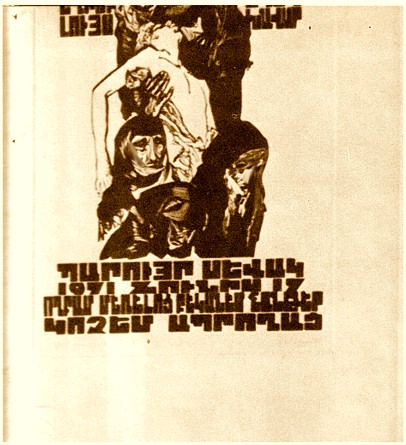

FRONTISPIECE OF SEVAK'S THE EVER-TOLLING BELL TOWER
ILLUSTRATED
BY KHANJIAN.
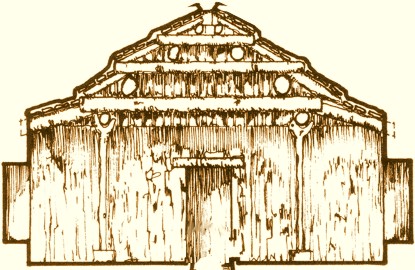
TWO COLUMNS [CAPITALS IN THE FORM OF BIRDS FACING EACH OTHER
SACRED COUPLE...UNION OF DUALITY] UPHOLDING THE PYRAMIDAL ROOF
CAPPED BY TWO BIRDS FACING EAST AND WEST [SUNRISE...SUNSET].
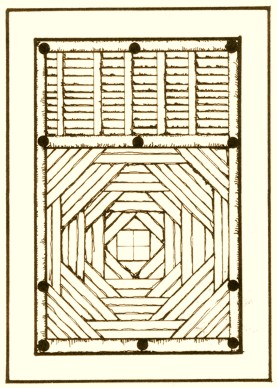
OJAKH -- LIT. HEARTH...THE FIRE PLACE...THE DIVINE SPARK THAT ILLUMINATES
AND GIVES WARMTH TO THE HOME OF ARMENIC FAMILY WITHIN. THE ROOF OF
THE HOME WAS LAID OUT IN THE SACRED ARMENIAN HAZARASHEN
OCTAGON-OCTAGRAM-DOUBLE SQUARE-DIAMOND-FOUR-SQUARE
PATTERN [EIGHT-FOLD PATH OF ILLUMINATION] THAT BROUGHT IN
FROM WITHOUT...FROM THE CELESTIAL HEAVEN THE
SOLAR ĒNERGY
OF THE SUN...NOURISHING THE ARMENIC HIGHLANDERS WITHIN THE OJAKH.
PRIMORDIAL HIGH KNOWLEDGE THAT WAS PRESERVED AND PASSED DOWN
FOR MILLENNIA IN AN UNBROKEN SACRED TRADITION.

In towns and cities like Shushi, the number of Armenian inhabitants began to dwindle as the Azeri central authorities, crafted by KGB veterans like Heydar Aliev [also the First Secretary of Azerbaijani SSR during the 1970s and 1980s], Armenians began to gradually leave Azerbaijan in order to build a normal life in Armenia and other places.
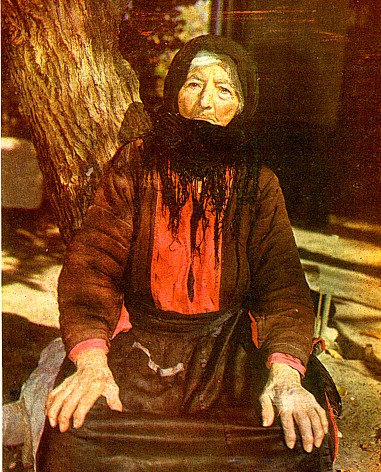
A Y A [LIT. MOTHER IN ARTSAKH
DIALECT FROM PRIMORDIAL
NAME OF A Y A -- THE GREAT MOTHER ] MINA OF ARMENAVAN, ARTSAKH.
IN THE TRADITIONAL SYUNIK-ARTSAKH DRESS --
104 YEARS OLD! LIKE MOST HIGHLANDERS RENOWNED
FOR THEIR REMARKABLE LONGEVITY, VIGOR AND HEALTH
LOOKS AMAZINGLY YOUTHFUL FOR HER
CENTURIAL AGE...PHOTOGRAPH TAKEN IN 1987.
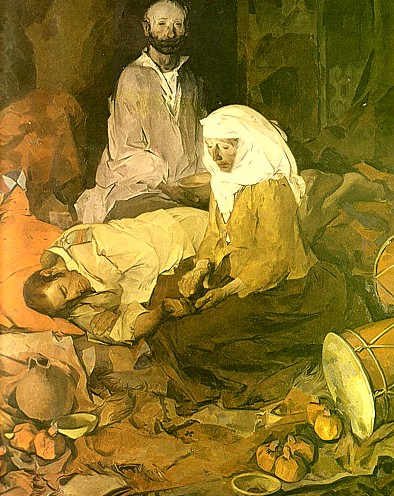
HOME-COMING. GRIGOR KHANJIAN.
ARMENIC FOLK COMMUNITY ARTS AND CRAFTS

HMAYAK [CHARM] WITH SACRED ARMANI SYMBOLISM. MORNING STAR
[ENCIRCLED EIGHT-POINTED/PETAL STAR/FLOWER] WITHIN THE
ZIGZAG [AQUARIUS] LINES OF THE COSMIC OCEAN. PARALLEL HORIZ. LINES
CONNOTED THE WINGED SUN DISK. NOTCH LINE AT TOP UNITE TO FORM
CHEVRONS/TREE OF LIFE.
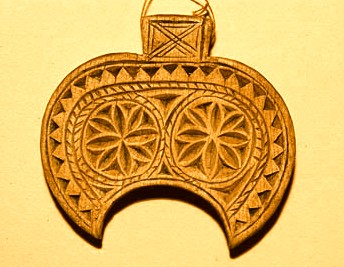
FOLKISH HMAYAK CHARAXAP‛AN
FROM JAVAXK‛ [AMULET OF PROTECTION].
CRESCENT SHAPED WITH TWO 8-POINTED
STARS [FORMING A
HORIZONTAL ∞].
TRIANGULAR RAYS EMANATING OUTWARD WITH
THE PYRAMIDAL X-BOX AT THE VERY TOP...


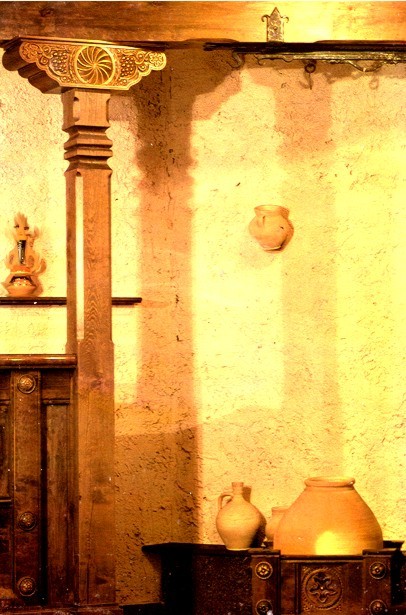
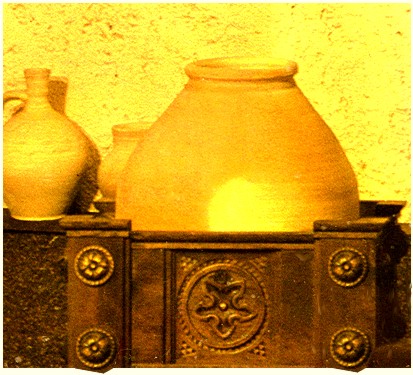


THERE IS NOTHING MORE PRECIOUS AND BEAUTIFUL ON EARTH
THAN THE PURITY AND INNOCENCE OF OUR CHILDREN.

OLD WOOD CARVED DECORATED BABE'S CRADLE.

BABE'S CRADLE WITH SUBLIME SYMBOLS OF LIFE. ON EACH SIDE
WITHIN THE ARCHES [SUPPORTING THE SHAFT] ENCIRCLED ATOM
WITHIN THE TRIANGLE [AQUARIAN LINES CONNOTE HYDROGEN/COSMIC WATERS]
CAPPED WITH TWO UNITED LL -- FACING RIGHT AND LEFT -- IN THE FORM OF A
UPSIDE DOWN T.

BAKING OF LAVASH -- THE SACRED TRADITIONAL ARMENIAN BREAD.
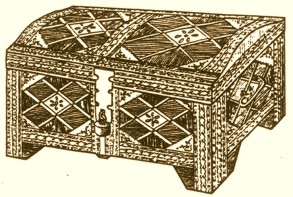
DECORATED DOWRY CHEST.


TRADITIONALLY PATTERNED AŁAMAN
[SALT] PURSE.

NOTE THE SYMBOL OF THE GODDESS [AYA - INANNA] TWO UNITED
Ēs
SEVENTH SACRED LETTER [ALONG WITH THE EIGHT-POINTED
STAR AND RIGHT AND LEFT SPINNING SPIRALS] ON THE SACRED
POUCH/RUG [AS THE DECORATIONS FROM
ÇATAL HÜYÜK]
IN AN UNBROKEN TRADITION OF AT LEAST 10,000 YEARS...


ANCIENT CLAY AŁAMANS [SALT
CONTAINERS].


HMAYAK [CHARM] WORN FOR GOOD LUCK AND PROTECTION
AGAINST EVIL. IMBUED WITH SACRED SYMBOLS.
WITHIN DOWNWARD POINTING DELTOID [MOTHER EARTH]
EIGHT POINTED STAR [VENUS-AST-AR-TE] WITH RADIATING WAVES/RAYS.
NOTE THE TWO HEADS ON THE OPEN TYING LOOP OF THE TWINE.
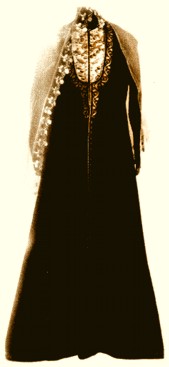
LADIES DRESS FROM UPPER ARMENIA [BARDZR HAYK‛].
ON DISPLAY IN THE STATE HISTORY MUSEUM OF ARMENIA.
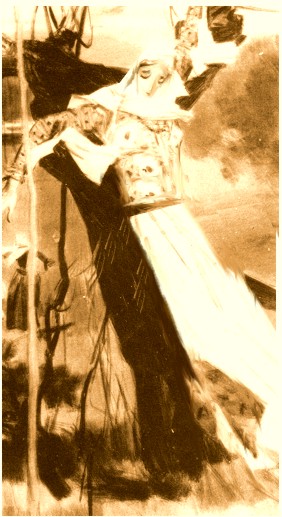
According to the census of 1989, 21,6 thousand people lived in the Shushi district, and the inhabitants of Shushi numbered 16,000.
U N I T Y !

ARTSAKH RETURNS TO THE BOSOM OF
M O T H E R A R M E N I A
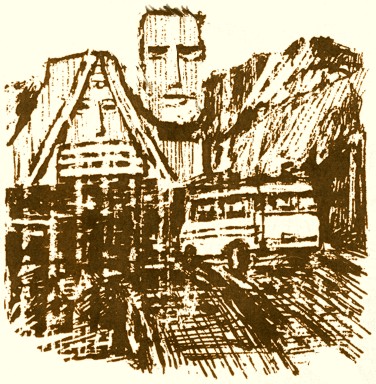
THE ICONIC WE ARE OUR MOUNTAINS [1967] IN ARTSAKH
SYMBOLIC OF
THE HIGHLANDER FIGHTING FREE SPIRIT OF ARTSAKHTSIS BY
RENOWNED SCULPTOR SARKIS BAGHDASARIAN.

THE HOUSE OF CULTURE IN MARTUNI IN THE TRADITIONAL
ARMENIAN
ARCHITECTURAL STYLE RESEMBLING THE GREAT TAMANIAN-ESQUE OPERA IN YEREVAN.
After the appropriation of everything that could be seized, the Azerbaijanis destroyed [in fact the destruction continues to this very day] all the remaining monuments of Armenian civilization.
DEATH TO TYRANNY AND TYRANTS !
ALL PEOPLE MUST LIVE FREE AND SHAPE THEIR OWN DESTINY

AT THE CLOSING OF THE TWENTIETH CENTURY
THE ARMENIAN PEOPLE WERE DETERMINED
TO FIGHT TO THE DEATH IN ORDER TO DEFEND
THEIR FREEDOM AND HONOR AND
NEVER EXPERIENCE GENOCIDE THAT BEFELL THEIR ANCESTORS
AT THE BEGINNING OF THAT CENTURY
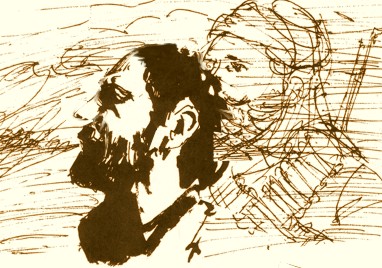
MONTE MELKONIAN -- ONE OF THE OUTSTANDING HEROES OF
ARTSAKH LIKE
COUNTLESS THOUSANDS GAVE HIS LIFE FOR THE LIBERATION OF HIS PEOPLE
DREW ALL OF HIS INSPIRATION AND CHARISMA FROM THE ARMENIAN
FREEDOM FIGHTERS OF XIXTH AND EARLY XXTH CENTURY.
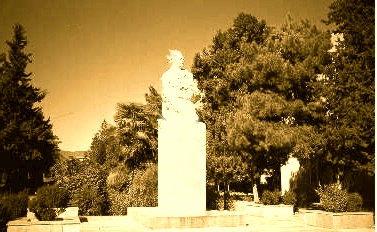
MONUMENT TO MONTE MELKONIAN IN MARTUNI.
In early 1990s the Azerbaijanis used the strategically important position of Shushi with its high hilltops and ancient walls that surrounded the old fort as an artillery position. The Azeris, using the heavy grad missiles, targeted the apartments of Stepanakert, the new capital of Artsakh. By bombing the civilians, the Azerbaijani leaders were not only committing a war crime but were also hoping to "bring to their knees" the proud Artsakhtsis. Contrary to this "tested" Azeri tactic, the Armenians decided to fight to the death and at any cost to silence the Azeri guns of Shushi that directly targeted women and children.
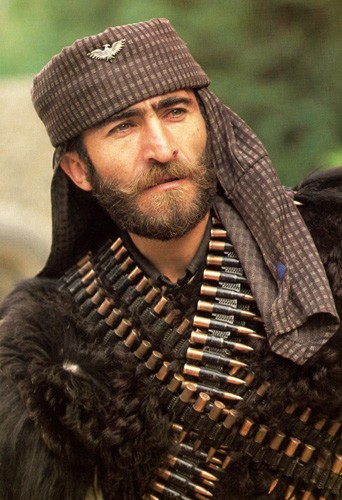
PAVEL MANUKIAN. ONE OF THE HERO FREEDOM
FIGHTERS OF
THE ARTSAKH WAR. PICTURE TAKEN CIRCA 1992.
MOST OF HIS FAMILY MEMBERS WERE KILLED DURING THE GENOCIDE.
In 1992 the Azatamartik - freedom fighter units charged Shushi and in a fierce battle took the city. The guns of death were silenced for good. Shushi was once again Armenian. The Armenian inhabitants of the city and their descendants that decades ago had fled Shushi, began to gradually return to their homes in order to rebuild and revive Shushi to its former glory as a center of culture, learning and progress.
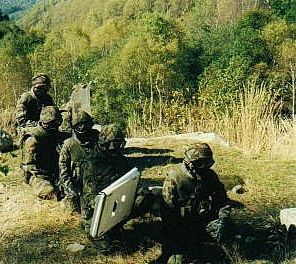
DEFENSE FORCES GUARDING THE BORDERS
TO PROTECT THE PEACE AND SAFETY.
![]()